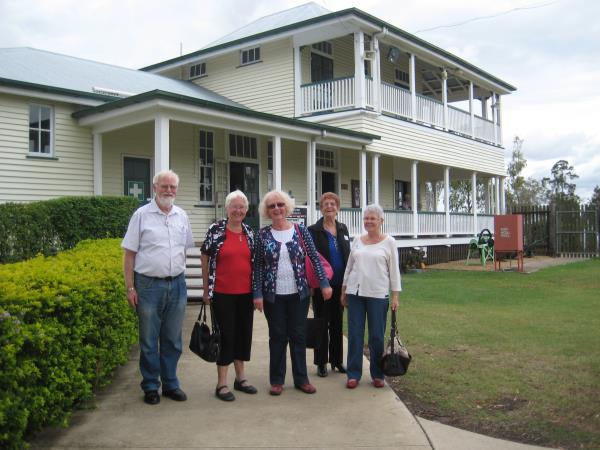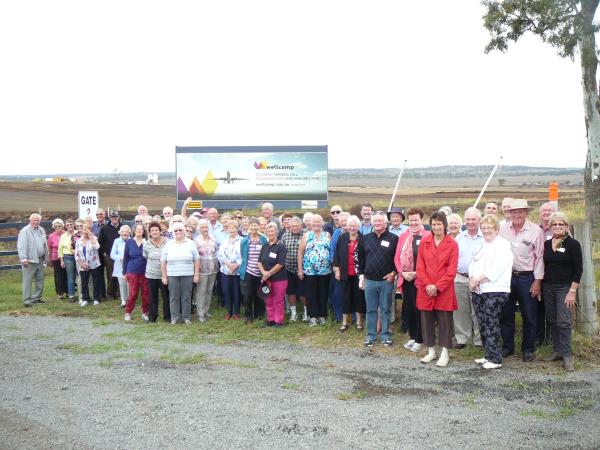
SEVENTY Warwick Combined Probus Club members and guests boarded two coaches for a tour of the Wellcamp Airport construction site, Jondaryan Woolshed and the Acland Coal Mine.
Wagner’s representatives Mary Wagner, Sara Hales and Kieran Convery joined the coaches for an instructive guided tour of the airport site.
Members were told the original concept for the site was an industrial estate. The airport was conceived in response to the need for ready access between Toowoomba and southern capitals and industrial sites.
It was a natural progression to build the region’s first jet capable airport, opening up the possibility of establishing passenger and freight services with the major airlines.
Qantas and Virgin have expressed interest and are in dialogue with Wagners. This is the first greenfield airport to be built within the last 46 years and is the first privately built public airport in Australia.
Converting undulating farming land with a comparatively small layer of alluvial topsoil to a functioning airport with a runway 2.87 kilometres long and 45 metres wide has involved approvals from various levels of government, engineering and design, and massive earthworks for the runway taxiways and apron together with the terminal and associated buildings.
The landing strip must be built within a 1.5 per cent tolerance which entails a plus or minus 10 millimetre difference over the length and width of the runway.
The runway will be constructed with flexible paving, including an asphalt mix, which will easily accommodate a fully loaded 747. The turning points, taxiways and aprons will include concrete because these areas have to bear the landed weight of up to 440 tonnes. Over 18 tyres, the load is 24.4 tonnes per tyre on a slow moving and turning plane.
Due to rain, a visit to the operations areas of the New Acland open cut coal mine had to be abandoned. However the group was welcomed to a presentation on the activities of the New Hope Group in south-east Queensland.
Members were surprised to learn that the New Acland mine has provided employment in and around Acland for over 10 years. Current leases subject to mining operations represent a very small percentage of the total Surat basin coal fields.
Current annual production is 4.8m tonnes of coal, of which 4.65m are exported through the port of Brisbane. The balance is sold for industrial use throughout Queensland.
New Hope’s presentation also included information about their other interests and operations including coal mining, exploration, port operation, oil, agriculture, innovative technologies and other investments.
The coal deposits at New Acland lie between 70m and 80 metres deep, in comparison with a depth of 50m to 75m in the Galilee basin.
Current open cut mining procedures result in a moving 175-hectare hole in the ground. Material is removed from the face, the coal is extracted and the remainder is relocated to the rear to rebuild the landscape behind the draglines. The surface is returned to similar condition to the original and planting of native vegetation is undertaken to maintain the region at agriculture or conservation standards.
The mine provides employment for more than 300 local residents, 160 contractors, and contributes indirectly to employment of more than 2000 people within the region.
The visit to the Jondaryan Woolshed complex included a shearing demonstration, a talk by the historian, and lunch followed by a brief inspection of the exhibits including the old Bank of New South Wales building moved from Oakey when the bank constructed new premises.







